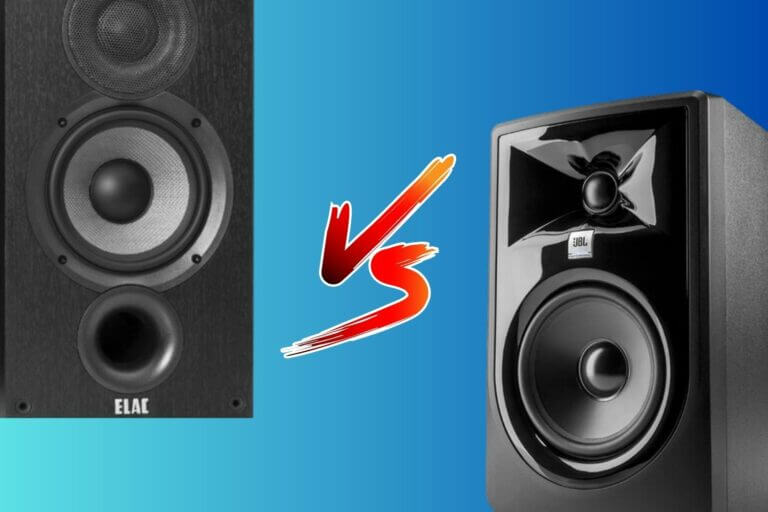The studio monitor Vs. speaker question! What is actually the difference?
Whether you’re a performing DJ, a music producer, or simply an audiophile, it’s important to know the difference between a pair of studio monitors compared to a pair of audio speakers. And while that may, on its surface, seem like it would be fairly straightforward, the truth is that some key yet subtle differences can greatly affect your overall listening experience.
What is The Difference Between a Studio Monitor and a Speaker? (In Short)
So, let the tips and education begin. A studio monitor and a speaker are both devices used for audio playback, but there are some key differences between them. A studio monitor is designed to provide a flat, uncolored sound that accurately reflects the recording being played. This is important for professional use, such as in recording studios or for mastering audio. In contrast, a speaker is designed to enhance the sound to provide a more pleasing listening experience, often with a bass-heavy response or other tonal characteristics. While studio monitors may be used for casual listening, they are optimized for accuracy rather than enjoyment, while speakers are designed primarily for listening enjoyment rather than analytical purposes.
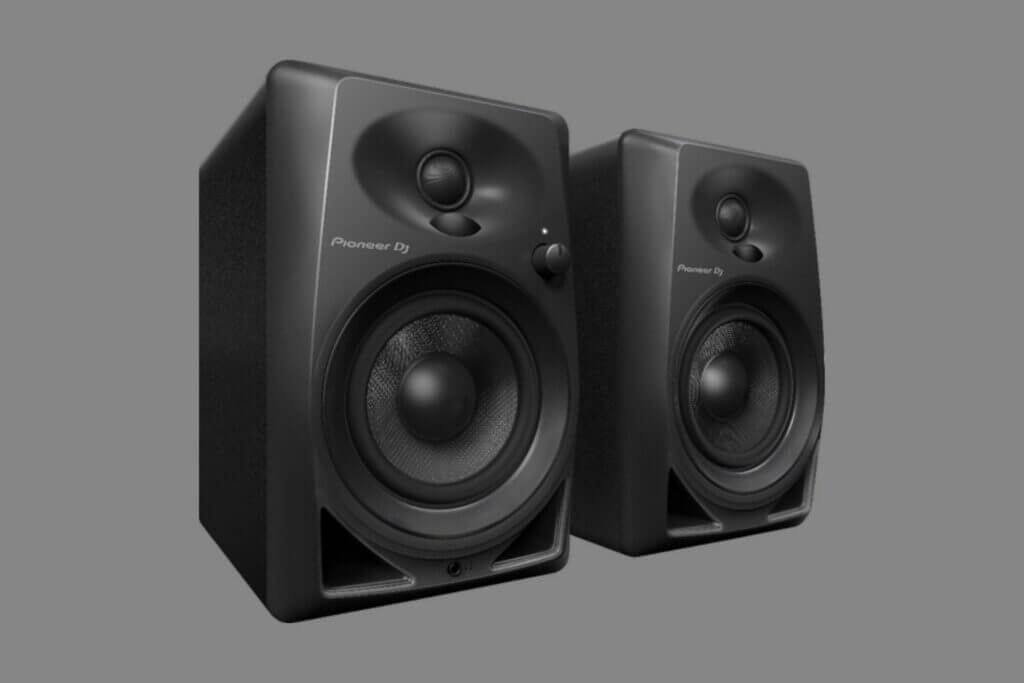
Read this next: Best DJ Speakers: Upgrade Your Home Studio And DJ Set Up
Why Do You need To Know The Difference?
Besides the fact that studio monitors and speakers are different audio listening devices, it’s important for any music performer or listener to know what the various distinctions are between the two.
Not only is it good to know in general, but by understanding how they differ, you can more easily narrow down your decisions between the two to pick the option that is ultimately best for you and what you plan to use it for.
What Is The Difference?
Studio Monitor Vs. Speaker differences, what are they? Let us dive into the audio listening options, the first thing we need to tackle is what makes them so different from one another.
In either case, there are powered speaker options as well as passive (i.e., “inactive”) speaker options, with powered speakers (otherwise known as active speakers) already having built-in power amps while passive speakers require an external amp to use.
While you can certainly get either option, for simplicity’s sake we’re going to be focusing primarily on active speakers as they are pretty much ready to go the moment you plug them in.
When it comes to studio monitors, these speaker devices focus on producing a sound with an all-around flatter and more neutral frequency response.
Especially when compared to more stereotypical audio speakers, studio monitors are meant to have a sound that is as close to how the original recording was produced as possible.
Studio monitors tend to operate most optimally in near-field listening environments and are the option most often used when performing audio production or when trying to listen in at the most precise and undisturbed level.
Meanwhile, the more stereotypical hifi sound speakers offer an almost entirely different listening experience for their intended audience.
Rather than focus on neutral and flat sound, meant to be as “pure” and as undisturbed as possible, most standard sound speakers present themselves as a way to more or less come across as satisfying to the listener.
To do this, these sound speakers operate on emphasizing the highs and lows of the frequency ranges, offering a deeper bass than normal as well as more compelling trebles and highs than you’d usually get.
This can result in a fuller and ultimately “clearer” listening alternative for those that aren’t interested in the sound’s purity and more interested in just enjoying the potential intensity of it.
Which Is Better?
While we’re going to go over which of the two is better based on what you’re looking for, the simple answer comes down to you and how you enjoy listening to your music.
The good news is that both options can be great if you’re willing to spend some money, with most high-priced speakers and studio monitors both having some of the alternative options included.
Generally, it breaks down to studio monitors being ideal for music producers and music audiophiles while sound speakers are for everyone else. Another way to put it is those studio monitors are for those that want a precise sound while sound speakers are for those that want to present that sound in the most enjoyable way.
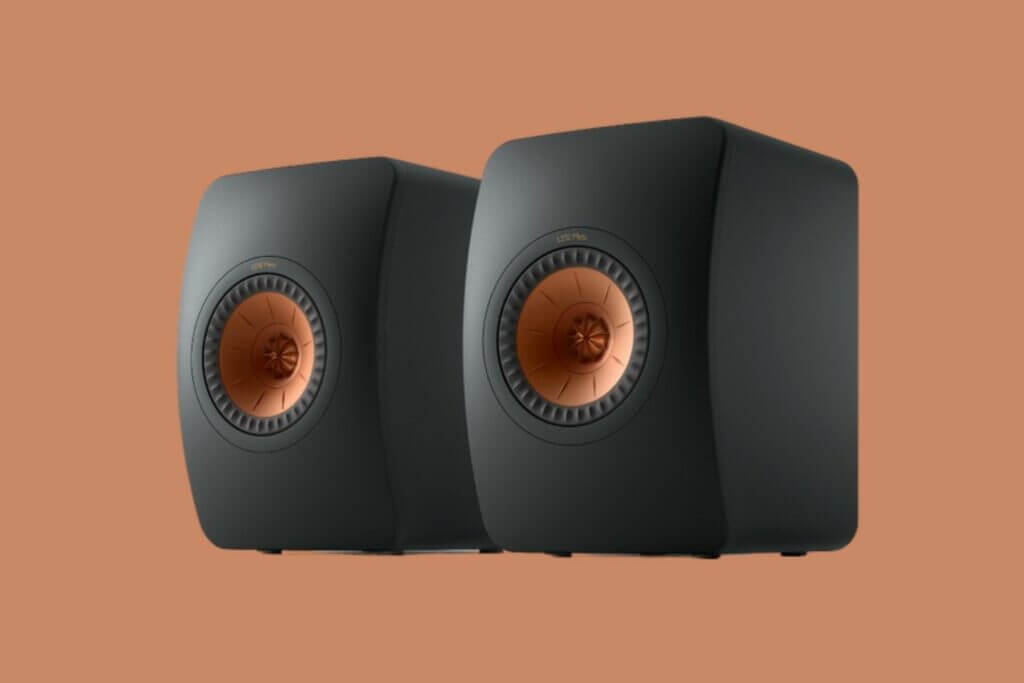
Read this next: Best Powered Speakers: A.K.A Active Speakers or Self-Powered Speakers
Which to Use
Now that you’ve got a general gist of the two audio options and what they offer, we’ll now take a look at the different reasons you’d need either option to help you pin down which would be the most optimal based on what it requires.
Music Production & DJing
Whereas general listeners have a lot to love with more general sound speakers, if you’re someone that finds themselves in a more professional “music producing” space, these same speakers can be much more of a detriment. Whether you’re a music producer or DJ that produces their own tracks, the ideal and expected option to use during working hours is a set of studio monitors.
While there are a lot of benefits to monitors for their own sake, their neutral sound and incredible sound accuracy and recreation are all but paramount if this is at all professional.
A flat response isn’t just great for hearing all of the minute details in a track, but it’s also there to give you as clean and as constant a performance as possible.
This means you can make intelligent decisions on when to play with and tweak an aspect of the track without worrying about an artificially established bass output or treble pick-up to make itself known. These can effectively cause you to plan for the music to go a certain way when, in reality, the speakers you were using just wanted to stress an area of sound.
A great example would be a pilot operating a plane. Not only is a clear field of vision important for the overall performance of the pilot, but any form of obstruction (be it clouds, rain, or other sources) can greatly hamper the pilot’s performance, potentially leading to some serious mistakes.
The same is true for music producers operating with a set of monitors compared to standard sound speakers. Simply put, you’re better off leaving the fun music specifically for when you’re just having fun.
General Listening
The first option as well as the option that the vast majority of listeners will fall into is that of the “general listener” or a home audio user.
These individuals, more than music producers or critical listening users, want music that is of a sound quality that their music is simply enjoyable to listen to. And while all music “should” be enjoyable to listen to, the truth is that that’s not always the case.
If your music is especially bland or uninspiring, listening can only be enjoyable when given some “tweaks” and “alterations.” With that in mind, it’s clear that these individuals are best using the punchy and lively options that are the sound speakers.
Sound speakers can take an otherwise drab and boring track and give it that necessary “oomph” to make it enjoyable to listen to. This can be a result of a deeper bass, a well-defined mid, or some very clear treble highs. Simply put, most audio sound speakers give you a way to improve a track’s EQ whereas you won’t get nearly as many options when it comes to a studio monitor pair and their expressly neutral listening options.
In-Depth Listening
For those that want a deeper and more in-depth listening experience, you’re going to want to also consider investing in a quality set of studio monitors.
As mentioned earlier, studio monitors offer a cleaner and more accurate sound reproduction with almost no alterations in bass or treble. And just as it makes for the ideal option when it comes to producing and tweaking music, that same neutrality, and detail makes it the ideal option for those that want to hear the music in its purest form.
Thanks to their high levels of sound accuracy, studio monitors are able to offer their music in as close a fashion as possible. This is true whether it’s meant to pick up the crisp cut of cymbals crashing or the steady thumping beat of the audio’s bass.
By making everything neutral, studio monitors allow the listener to experience everything in as precise a manner as possible without one sound being made to artificially prop itself over another.
While this high level of attention to detail may not be all that appreciated by most general or casual listeners, if you’re a true audiophile or someone that has gotten used to hearing music in this way, there’s nothing quite like hearing music played in its purest form
Home Audio Theaters
Lastly, if you’re someone that plans on having a home theater, there’s no better option than a set of powerful and explosive home stereo speakers.
Especially when it comes to a home theater, you want your sound to have an incredible bass, to make the action sequences as engaging and entertaining as possible, while also being able to reach high enough to allow the spoken words onscreen to have an increased level of clarity and legibility.
The truth is that “sound accuracy” just isn’t all that important when watching a movie, especially when you’re enjoying a fast-paced or action-packed film with a lot of intensity and drama.
In fact, studio monitors and their neutral flat sound can be more than a bit of a detriment to the listening experience, as movies and films are often created where the sound isn’t coming in quite the same way as the movie would otherwise have you believe.
This can also be true of the slower moments, where background noises may be much more apparent with studio monitors than you’d otherwise want (for example, if the characters on screen are talking or having an intense moment).
While there can be a bit of a debate on where monitors should and shouldn’t be based on who’s doing the listening, the one place everyone agrees they shouldn’t be is in home theaters.
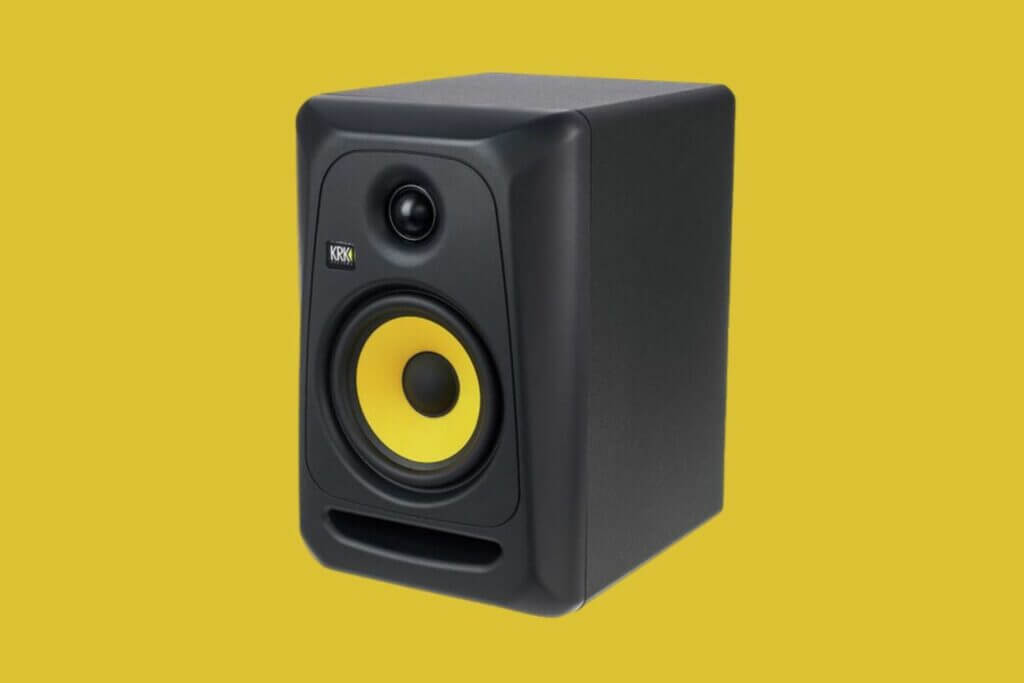
Read this next: Front Vs Rear Ported Speakers: Which Monitors Are Actually Best? And Why?
Comparing Different Speaker Types
Now that we’ve gone over where these speakers will generally benefit you the most, we should take some time to determine how they can stake up to one another based on the type of speaker they are.
While studio monitors are fairly universal from one type to the next, when it comes to audio sound speakers, there are more than a few different options available and worth comparing.
Bookshelf Speakers
Bookshelf speakers (also known as Hi-Fi speakers) are some of the more common options available in most homes. Meant to offer an enjoyable listening experience first and foremost, these are what most people tend to think of when they think of “regular speakers”. They are available in a multitude of different options based on the size of the room you need them to fit.
Not only are bookshelf speakers great for listening to music, movies, and other audios in the most enjoyable of ways, but they are also incredibly easy to grasp and play with, ensuring that pretty much anyone can tailor their listening experience without worrying about controls that are too advanced or difficult to use.
Studio Monitors
As mentioned previously, studio monitors excel at offering an accurate and neutral listening experience. Because they are meant to produce audio as close to what it initially was meant to sound like, it’s ideal for those that want precision and a heavy focus on clarity, be that for work or simply to enjoy the music in its purest state.
Multimedia Computer Speakers
While dedicated studio monitors are standalone in their level of precision and clarity, that isn’t to say there aren’t some noteworthy alternatives.
Computer speakers suffer due to a weaker sound output compared to most other options, however, that isn’t to say they can’t be great when it comes to offering as close to a neutral sound as a regular sound speaker can be.
They are great for performing day-to-day tasks, including track editing or sound manipulation. In addition, computer speakers usually will have some EQ features available to use, making them great if you want to have a more engaging sound as well.
PA Speakers
PA speakers are often regarded as the bookshelf speakers’ big brothers. Not only are they much larger, but they can produce sounds at a much more amplified degree. These speakers tend to have woofer sizes that start at eight inches and reach as high as 15.
Unlike bookshelf Hi-Fi speakers, PA speakers are meant for large show gatherings where they need to hit as many people in a space as possible while also being enjoyable to listen to.
Because of their size, PA speakers are not ideal for most non-professional uses, often being too loud and cumbersome for even most home theaters, while their colored sound output can end up muddying just about any music needed for DJs or other producers.
Essentially, PA speakers are only useful for individuals that plan to perform on-stage or in front of an audience. If you are a performing or mobile DJ, you’ll definitely want to invest in one or two PA speakers. For everyone else, you’re better off looking at a studio monitor or a bookshelf speaker for your personal use.
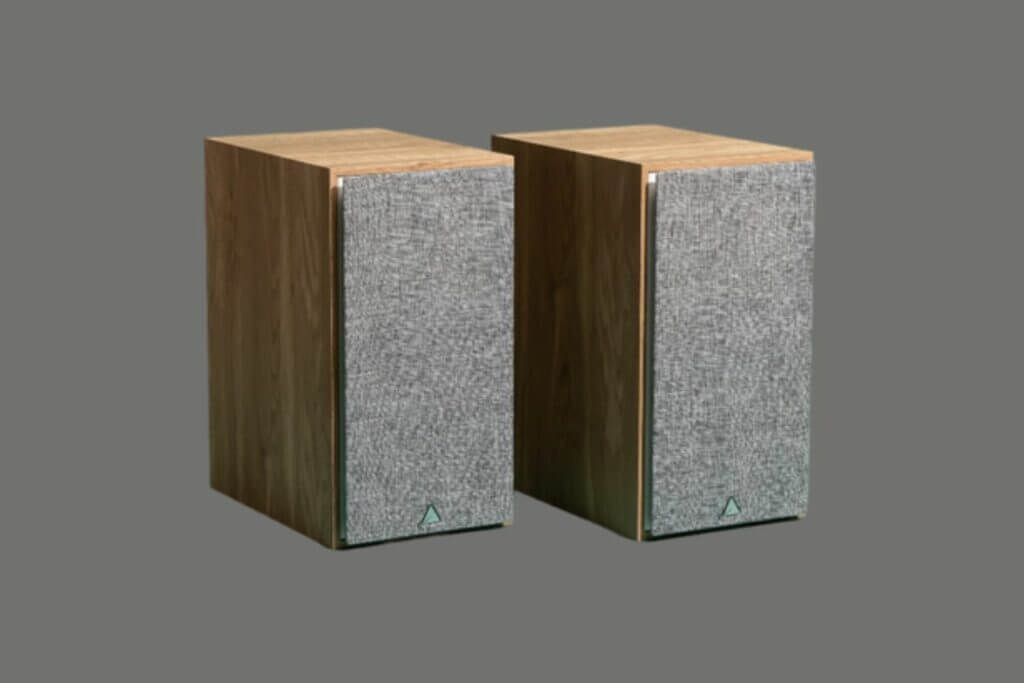
Read this next: 10 Best 5 Inch Home Studio Monitors
Studio Monitor Vs. Speaker: Summary
As you can see, when it comes to the different speaker options available there isn’t a one-size-fits-all situation. Certainly, if you’re trying to work professionally you’ll want to invest in a quality studio monitor.
For everyone else, however, it can ultimately come down to personal taste. Are you interested in listening to music as it was initially created?
If so, you’re also going to want to check out some studio monitors. If you’re someone that likes to enjoy movies, listen to music with more beats and bumps, or simply want your sound to be spiced up a bit, you’ll want to look into one of the more expected speaker options like a Hi-Fi bookshelf speaker.
No matter what you’re looking for, by understanding what these speakers all do and how they differ from one another, you are able to optimize your listening experience to exactly what will lead to being experienced so you’re not trying to watch a movie with a flat audio response or trying to work in the studio with speakers that muddle up your sound.



